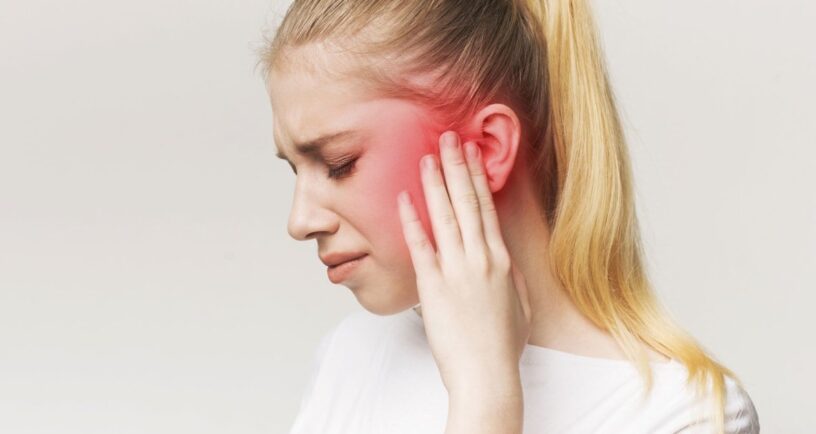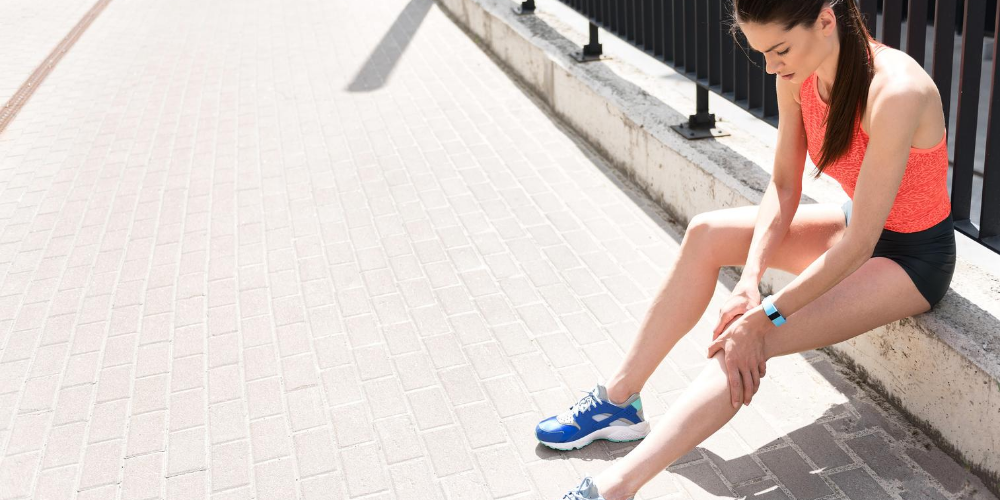Problems in the inner ear cause disturbances in hearing and balance, but not pain. Dental problems (including teething in kids) can cause pain that seems to come from the ear. Trauma and infection of the outer ear hurt. Bacterial and fungal infections in the ear canal—as can happen to swimmers—cause itching, redness, a feeling of fullness in the ear canal, diminished hearing, and increasing pain. Signs and symptoms of a middle ear infection include irritability, fever, batting or pulling at the ear, difficulty sleeping, decreased hearing, loss of balance, decreased appetite, and discharge from the ear.


1. Anti-Swimmer’s Ear Drops
How it works: Mildly acidic solutions help restore normal pH and an environment less hospitable to bacteria and fungi.
- PREPARATION:
- 1 teaspoon (5 ml) white vinegar
- 1 teaspoon (5 ml) rubbing alcohol
- DIRECTIONS: Pour the ingredients into a sterile bottle with a dropper (or a small squeeze bottle; just use a sterile bowl and clean teaspoon). Cap and shake vigorously to combine (or stir them together in a bowl first and then add to bottle). Squeeze 2 to 3 drops into each ear before and after swimming or bathing (or pour 1 teaspoon [5 ml] into each ear). Tip the head to one side, so the solution reaches the ear canal, and then tip the head back, so that the mixture drains out.
- YIELD: 01 APPLICATION FOR EACH EAR
2. Warm It Up
How it works: Warmth relieves ear pain. Cold can also do the trick. Determine which works best in your case. This treatment relieves symptoms and may increase circulation to the area. However, it does not directly combat the infection, and you should see the doctor for antibiotics or other treatment if necessary.
- PREPARATION:
- A hot water bottle or warm washcloth
- A clean cloth
- DIRECTIONS: Lie on your side, the painful ear up. (Or ask your child to do the same.) Check that the hot water bottle or washcloth is warm but not too hot. If using a hot water bottle, cover the outer ear with a clean cloth first. Apply the warmth until the bottle or cloth cools. Reheat and apply again if needed.
- YIELD: 01 APPLICATION
- NOTE: If your child finds cold more soothing, use a bag of frozen peas, first covering the ear with a cloth.
3. Rice Ear Warmer
How it works: Heat helps relieve the pain of earache.
- PREPARATION: 1 cup (195 g) uncooked rice (any variety)
- DIRECTIONS: Pour the rice into a clean athletic sock and knot the top. Microwave the rice-filled sock on HIGH for 30 seconds. Check the warmth level: the ricefilled sock should be warm but not too hot. Lie down with the painful ear up. Apply the warm sock to the ear. If it is too warm, apply it on top of a clean, soft cloth.
- YIELD: 01 APPLICATION
4. Herbal Eardrops
How it works: Three studies have shown that herbal eardrops reduce pain from middle ear infections in children as well as or better than anesthetic eardrops. Otikon, the herbal oil used in the studies, contains garlic, mullein, calendula, and St. John’s wort in olive oil. Garlic (Allium sativum) is antimicrobial against viruses, bacteria, and fungi. Mullein (Verbascum thapsus), St. John’s wort (Hypericum perforatum), and calendula (Calendula officinalis) have activity against some viruses and bacteria, counter inflammation, and ease pain. Calendula also fights some fungi, though these can infect the outer, but not the middle ear.
- PREPARATION:
- 1 tablespoon (2 g) dried St. John’s wort flowering tops
- 2 tablespoons (3 g) dried calendula flowers
- 1 tablespoon (2 g) dried mullein
- ½ cup (120 ml) extra-virgin olive oil
- 2 garlic cloves, minced
- 1 vitamin E capsule
- DIRECTIONS:
Place the herbs in a clean coffee mill or food processor and process until powdered.
Heat water in the bottom of the double boiler. Once it boils, lower the heat to low.
Pour the oil into the top pan. Add the garlic. Stir in the herbs and cover the pot. Heat over as low a heat as possible for 30 to 60 minutes, stirring frequently. Do not allow the oil to burn or water to get into the oil. Remove the pot from the heat.
Let cool. Strain through muslin or a double layer of cheesecloth. Squeeze as much oil as you can out of the herbal matter. Discard or compost the herbs.
Bottle the oil. To help preserve the oil, puncture the vitamin E capsule into the bottle. Refrigerate the mixture for up to one year. Drop 2 to 3 drops of warm herbal oil into the affected ear as described in the previous recipe.
- YIELD: ¹∕3 TO ½ CUP (80 TO 120 ML), FOR MULTIPLE APPLICATIONS
5. High and Dry
How it works: Bacteria and fungi thrive in warm, moist conditions. Plus, public swimming pools, lakes, and oceans contain bacteria. Removing water from the ear eliminates a potential breeding ground.
- PREPARATION: A clean, soft cloth
- DIRECTIONS: After swimming, immediately dry your outer ears gently and thoroughly with the cloth. Tip your head to one side, letting the water drain from one ear. Dab away that moisture. Repeat the action with the other ear.
- YIELD: 01 APPLICATION IN EACH EAR
- NOTE: Alternatively, you can use a blow-dryer, but do so with care: I turn it to low and hold it at least a foot (30 cm) away from your ear. Excessive heat and noise can cause damage.
6. Go Pro (Biotics) Summer Pops
How it works: Live-culture yogurt and kefir contain bacteria similar to those normally present in your intestinal tract. The friendly bacteria and fungi that colonize your bodily surfaces promote immune system function and defend against disease-causing microbes. The five studies investigating the ability of oral probiotics (usually taken as supplements) to prevent recurrent middle ear infections in infants and children have yielded mixed results. However, studies have shown that probiotics help prevent respiratory infections. The significance is that colds and influenza set the stage for middle ear infection.
- PREPARATION:
- 2 cups (400 g) honey vanilla Greek yogurt (or your favorite)
- 1 tablespoon (15 g) fresh orange juice
- 1 cup (170 g) sliced fresh strawberries
- 1 cup (145 g) fresh blueberries
- DIRECTIONS:
In a blender, combine the yogurt and juice. Gradually add the strawberries and blueberries and pulse until fully blended.
Spoon the yogurt mixture into a Popsicle mold with 8 impressions or into 8 paper cups. Insert sticks (for the paper cups, you can use plastic spoons or snip sturdy plastic straws in half to create holders). Freeze for 2 to 4 hours until firm. To remove, dip the cups or mold briefly into warm, not hot, water, pull out, and enjoy! Remove them all at once and wrap in individual resealable plastic bags to eat at your leisure.
- YIELD: 08 SERVINGS
- NOTE: Because their intestines aren’t mature enough to digest dairy products, children under the age of twelve months should not consume milk. However, if your infant is six months old or older, is not allergic to milk, and doesn’t have an allergic condition such as eczema, yogurt is fine. The bacterial cultures in yogurt digest much of the lactose (milk sugar) and casein (milk protein).
Fact or Myth?
- DON’T GET NEAR PEOPLE WHO HAVE A MIDDLE EAR INFECTION: YOU COULD CATCH IT. Myth. They aren’t contagious. Still, you don’t want to share the dirty cotton swabs of a person who has an infection. Staying clean and dry is the rule for avoiding swimmer’s ear.
- IF YOU HAVE SWIMMER’S EAR, WEARING EARPLUGS WILL BLOCK OUT THE WATER AND ALLOW YOU TO CONTINUE SWIMMING UNTIL THE INFECTION CLEARS. Myth. Refrain from using earplugs until an infection is fully cleared. Then clean them with an alcohol swab before using the earplugs again. Also, if you’re prone to swimmer’s ear, watch for warnings at the pool or swimming area that indicate high bacterial counts. Keep your head out of the water on those days.
- DIDN’T YOUR GRANDMOTHER TELL YOU NOT TO PUT ANYTHING SMALLER THAN YOUR ELBOW INTO YOUR EAR? Well, it’s a fact. Don’t put cotton swabs, hairpins, or anything else in your ear canal to dig out wax or scratch an itch. You risk packing the wax deeper and injuring the ear canal and eardrum. If you’re prone to swimmer’s ear, use a cotton ball or towel to dry your outer ear after showering, bathing, and swimming.
When to see the Doctor
- Has a mild to moderate earache for more than two to three days
- Has severe ear pain
- Has significant symptoms of swimmer’s ear or middle ear infection
- Have a sick infant under six months of age
- Have a toddler under two years of age who has ear pain and fever






Leave a Reply